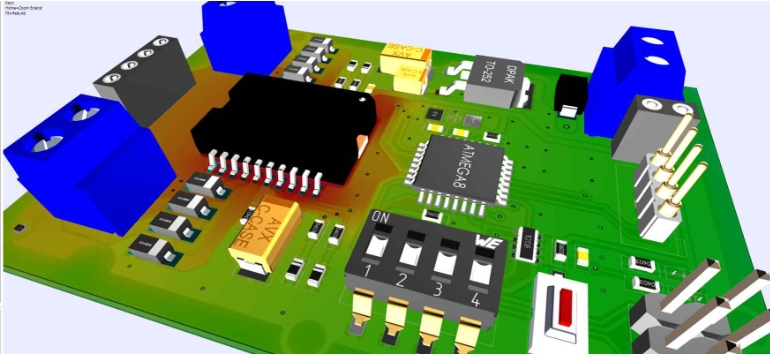The thermal conductivity of PCB is a description of the thermal conductivity characteristics of a certain material. In practical applications, the magnitude of thermal impedance determines the
thermal conductivity effect, and the thermal conductivity does not change due to changes in environment, shape, or thickness.

The thermal conductivity of a circuit board depends on the material used. Common circuit board materials such as FR4 glass fiber reinforced epoxy resin board have a thermal conductivity of
approximately 0.25-0.35W/(mk), while aluminum substrates typically have a thermal conductivity between 1-3W/(mk).
The thermal conductivity of a multi-layer PCB circuit board is its thermal conductivity. Materials with lower thermal conductivity allow for lower heat transfer rates. On the other hand,
materials with high thermal conductivity allow for higher heat transfer rates. For example, metals are very effective in thermal conductivity because they have high thermal conductivity.
That's why they are often used in applications that require heat dissipation. However, materials with low thermal conductivity are suitable for applications that require insulation.
Epoxy resin and glass (FR4, PTFE, and polyimide)
FR4 is mainly used for mass production of PCB multilayer circuit boards. However, in this case, compared to alternative materials, the thermal conductivity of PCB is very low.
Therefore, various thermal management techniques and methods are now used to maintain the temperature of PCBs and their active components within a safe working range.
Ceramics (alumina, aluminum nitride, and beryllium oxide)
Ceramics have higher thermal conductivity than epoxy resin and glass. However, this higher thermal conductivity is accompanied by higher manufacturing costs.
This is because ceramics are mechanically tough, making it difficult for them to drill mechanically or with lasers. Therefore, the multi-layer manufacturing of ceramic PCBs
has become difficult.
Metals (copper and aluminum)
Aluminum is mainly used for manufacturing metal core PCBs. Metal has higher thermal conductivity than epoxy resin and glass, and the cost of manufacturing PCB multilayer circuit boards is
reasonable. Therefore, they are very effective for applications that require exposure to thermal cycling and heat dissipation. The metal core itself can achieve efficient heat dissipation and
dissipation without the need for additional processes and mechanisms. Therefore, manufacturing costs tend to decrease.
The thermal conductivity coefficient (TC) of a circuit board is one of the indicators for measuring its thermal conductivity performance. It usually refers to the heat transfer rate per
unit area of a circuit board that passes through the board per unit time when the surface temperature of the circuit board rises by 1 ° C.
This indicator is usually determined by two factors: the thermal conductivity of the circuit board material and the design structure of the circuit board.